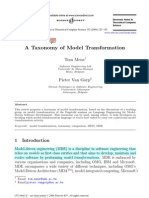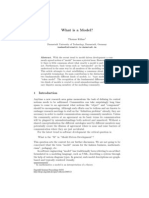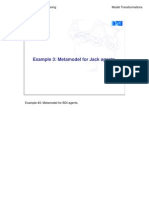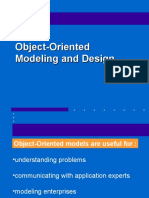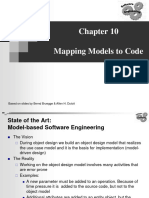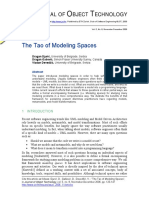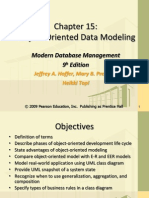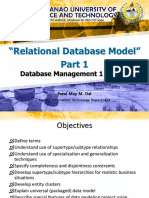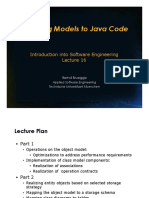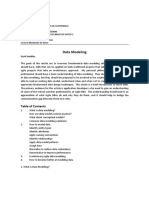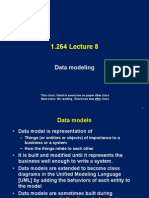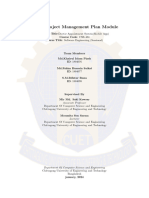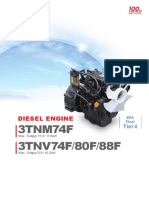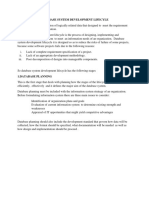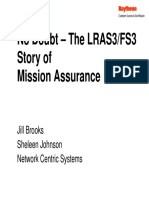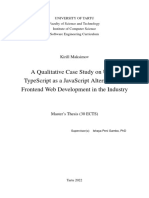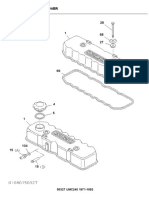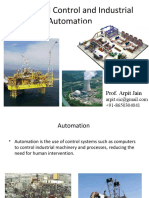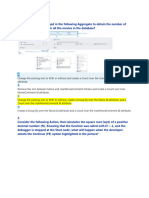0% found this document useful (0 votes)
310 views33 pagesModel Transformations Transformation Models
The document discusses representing model transformations as transformation models. It proposes that while model transformations are often defined operationally for execution, they can also be viewed descriptively through transformation models. As an example, it presents a transformation model for the well-known transformation from entity-relationship (ER) models to relational models. The transformation model is defined using UML/MOF class diagrams and OCL constraints to specify the properties a transformation must fulfill without detailing execution.
Uploaded by
ToperElevenicCopyright
© © All Rights Reserved
We take content rights seriously. If you suspect this is your content, claim it here.
Available Formats
Download as DOCX, PDF, TXT or read online on Scribd
0% found this document useful (0 votes)
310 views33 pagesModel Transformations Transformation Models
The document discusses representing model transformations as transformation models. It proposes that while model transformations are often defined operationally for execution, they can also be viewed descriptively through transformation models. As an example, it presents a transformation model for the well-known transformation from entity-relationship (ER) models to relational models. The transformation model is defined using UML/MOF class diagrams and OCL constraints to specify the properties a transformation must fulfill without detailing execution.
Uploaded by
ToperElevenicCopyright
© © All Rights Reserved
We take content rights seriously. If you suspect this is your content, claim it here.
Available Formats
Download as DOCX, PDF, TXT or read online on Scribd
/ 33


